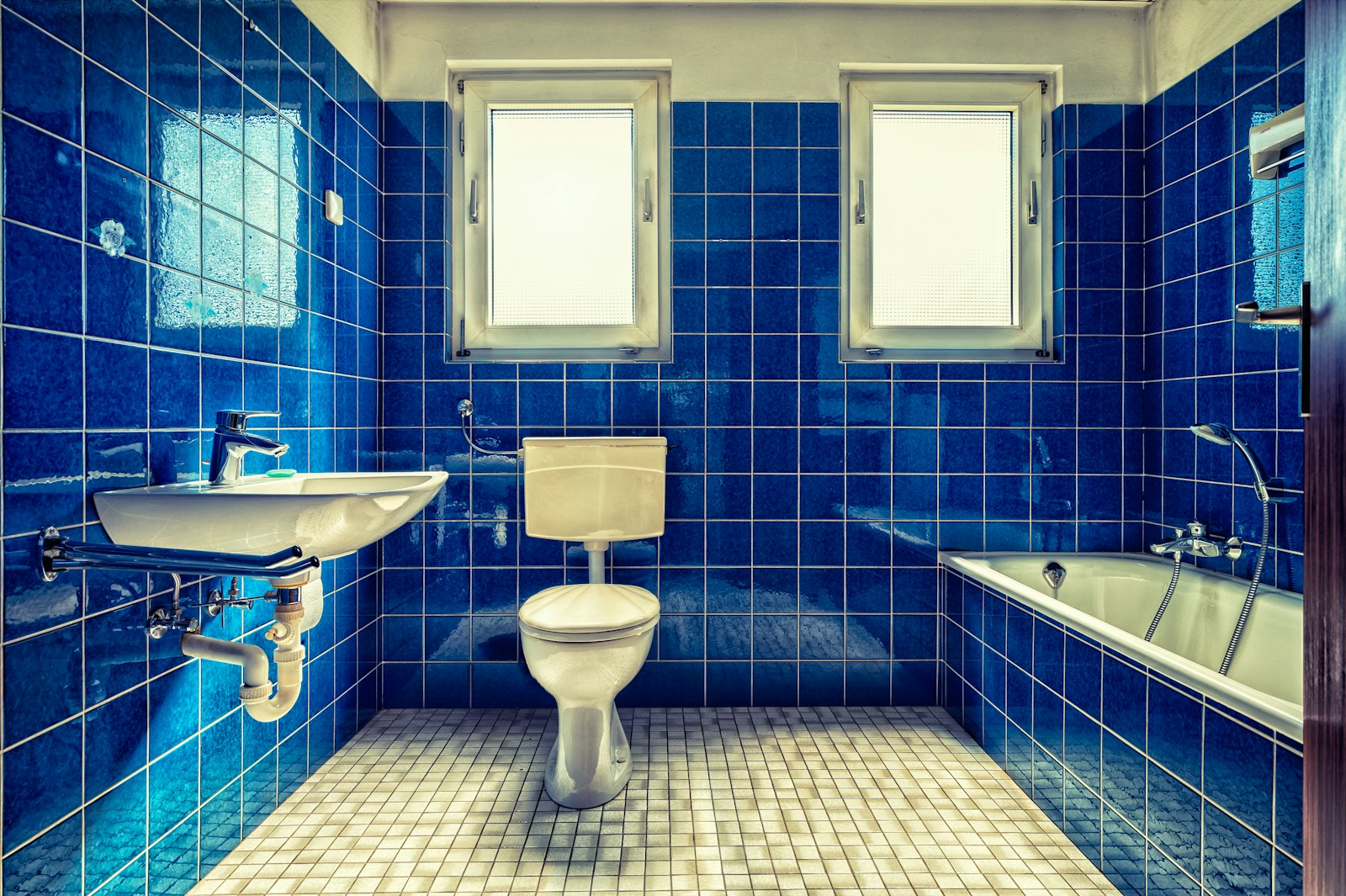How to Ask to Use the Bathroom in Spanish
Imagine you’re in a bustling café in Madrid, sipping on your café con leche, when suddenly you feel the call of nature. You glance around, but the signs are all in Spanish, and your high school Spanish class feels like a distant memory. Panic sets in as you realize you need to ask someone for directions to the bathroom, but you’re not sure how.
Don’t worry, we’ve all been there. Learning a few key phrases can be a lifesaver. Picture this: you confidently approach the barista and say, “¿Dónde está el baño?” Their face lights up with understanding, and you feel a wave of relief as they point you in the right direction. Knowing how to ask for the bathroom in Spanish not only helps you in a pinch but also makes your travel experience smoother and more enjoyable.
Essential Spanish Phrases for Bathroom Requests
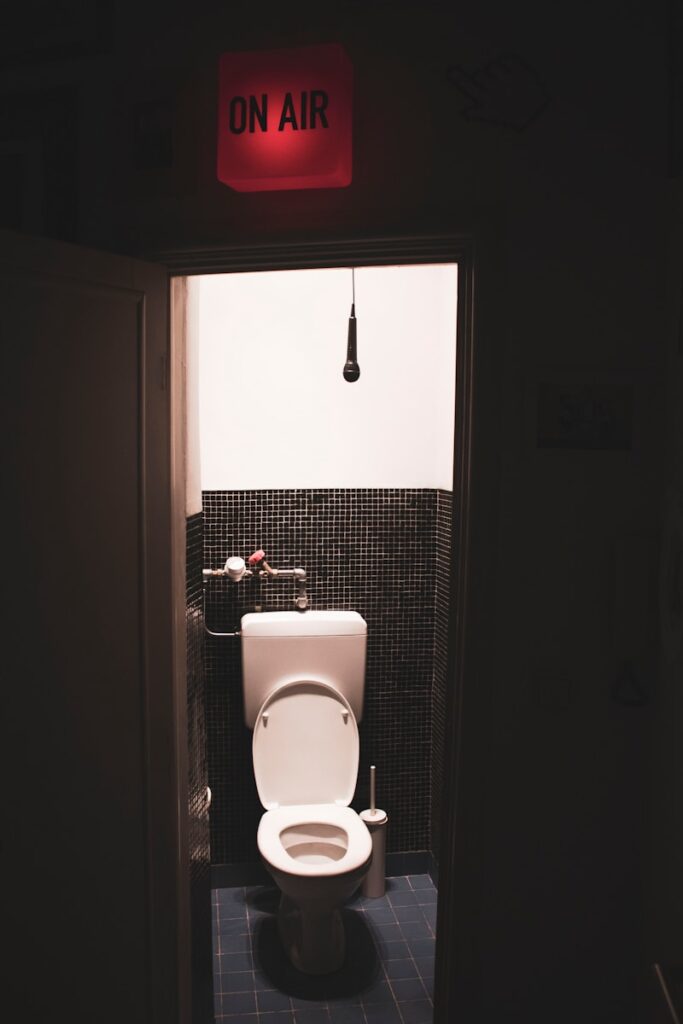
Imagine you’re in a bustling café in Madrid, sipping your coffee, and suddenly you need the bathroom. Knowing how to ask can save you from an awkward moment. Here are some essential Spanish phrases to make your experience smoother.
“¿Dónde está el baño?” (Where is the bathroom?)
Pronunciation Guide
Getting the pronunciation right makes a difference. For “Dónde está el baño?”, say it like “DON-day es-TAH el BAN-yo”. An easy way to remember is breaking it down into small, manageable parts.
When to Use This Phrase
Whenever you need directions to the bathroom, “Dónde está el baño?” is your go-to. Whether in a café, a mall, or a friend’s party, this phrase works everywhere. It’s the polite way to inquire without getting too personal.
“¿Puedo usar el baño?” (Can I use the bathroom?)
Sometimes, you need to ask for permission. In those cases, “¿Puedo usar el baño?” is handy. Pronounce it as “PWEH-do oo-SAR el BAN-yo”. Use it in formal settings, like someone’s home or a business place, to show respect while asking.
“Necesito ir al baño” (I need to go to the bathroom)
When urgency strikes, “Necesito ir al baño” conveys it clearly. Pronounced “neh-seh-SEE-toh eer ahl BAN-yo”, it cuts straight to the point. Ideal for emergencies, this phrase ensures people understand you need immediate access.
“¿Me permite usar el baño?” (Would you allow me to use the bathroom?)
For the most polite request, “¿Me permite usar el baño?” fits the bill. Say it like “meh pehr-MEE-teh oo-SAR el BAN-yo”. Use this in very formal settings or when you want to show utmost respect, like at a high-end restaurant or during a business meeting.
Quick Reference Table
Here’s a quick reference table to keep these phrases handy:
Phrase | English Translation | Pronunciation Guide |
|---|---|---|
¿Dónde está el baño? | Where is the bathroom? | DON-day es-TAH el BAN-yo |
¿Puedo usar el baño? | Can I use the bathroom? | PWEH-do oo-SAR el BAN-yo |
Necesito ir al baño | I need to go to the bathroom | neh-seh-SEE-toh eer ahl BAN-yo |
¿Me permite usar el baño? | Would you allow me to use the bathroom? | meh pehr-MEE-teh oo-SAR el BAN-yo |
These phrases are your tools for better travel experiences. By mastering them, you enhance your interactions and navigate new places confidently.
Common Words for “Bathroom” in Spanish
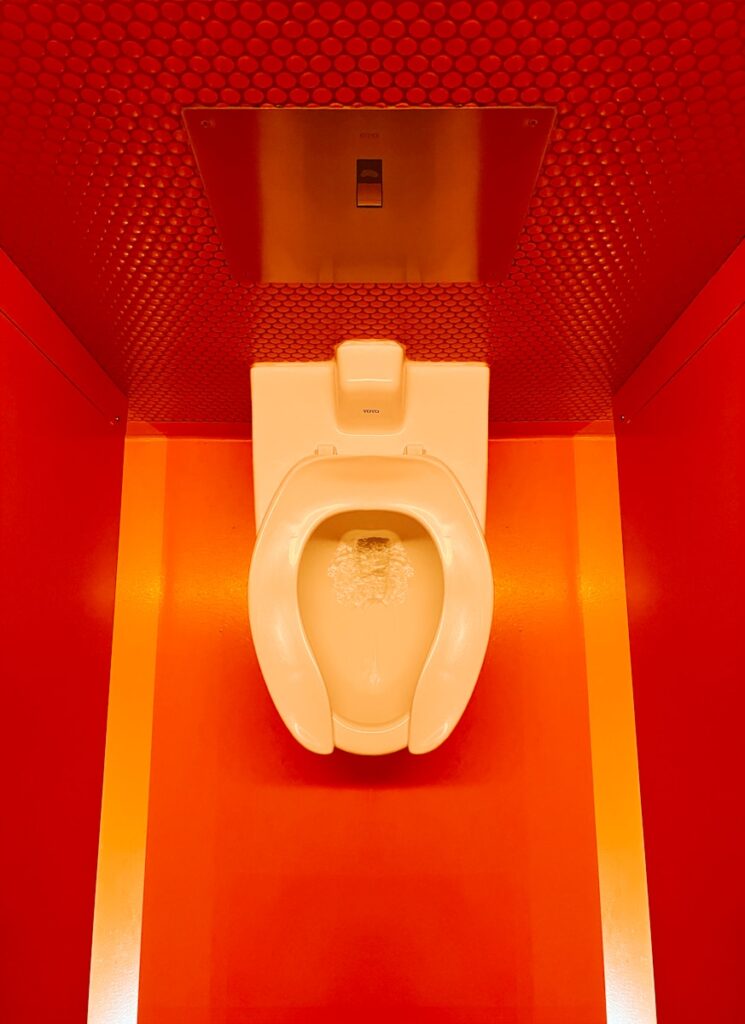
When traveling to a Spanish-speaking country, knowing how to ask for the bathroom can make your journey smoother. Depending on where you are, the term for “bathroom” might change, so it’s useful to know a few variations.
El Baño
The most common term you’ll hear is El baño. Whether you’re in a café, a restaurant, or someone’s home, you can confidently ask, “¿Dónde está el baño?” This question is straightforward and will be understood everywhere. Picture yourself after a long flight, stepping into a busy airport in Mexico City. You’re exhausted, and you really need to find a restroom quickly. Saying “¿Dónde está el baño?” will get you immediate help. Remember, this phrase is your go-to in many different settings.
Los Servicios
Another useful term is Los servicios. This phrase often appears on signs in public places like shopping malls and airports. If you’re walking through a bustling market in Barcelona wondering where the restroom is, you can look for signs reading “servicios”. It’s a little more formal, which means it’s handy when you’re in places with more polished decor or signage. Using “¿Dónde están los servicios?” while exploring large public venues ensures that you won’t be misunderstood.
El Aseo
In some regions, especially in Spain, El aseo is a term you might come across. It’s less common than El baño but still widely understood. Imagine you’re staying with a host family in Seville. During your stay, they might casually mention El aseo when referring to the bathroom. Asking, “¿Puedo usar el aseo?” will sound polite and demonstrate cultural awareness. This term is also useful in more refined settings like museums or historic sites.
Regional Variations
Just like English, Spanish has regional variations. In some parts of Latin America, you might hear el sanitario or el retrete. Each country or even region within a country can have its nuances. Using the local term can make your communication clearer and show respect for the local dialect. For instance, knowing that el escusado is used in some parts of Central America gives you an edge in understanding and being understood.
Here’s a quick reference table for clarity:
Spanish Term | English Translation | Example Phrase |
|---|---|---|
El baño | Bathroom | ¿Dónde está el baño? |
Los servicios | Restroom | ¿Dónde están los servicios? |
El aseo | Toilet | ¿Puedo usar el aseo? |
El escusado | Toilet | ¿Dónde está el escusado? |
By mastering these terms, you can confidently navigate through different Spanish-speaking regions without confusion. Remember using the right term can enrich your travel experience and help you connect more authentically with locals.
Polite Expressions to Enhance Your Bathroom Request
Politeness goes a long way when requesting to use the bathroom, especially in another language. Let’s jump into some expressions and tips that’ll make your bathroom requests in Spanish not just effective but also friendly and respectful.
Adding “Por Favor” (Please)
Adding “por favor” transforms a straightforward request into a polite one. Think about it, would you rather hear someone demand or politely ask?
For example:
That small addition shows respect and consideration for others, making them more likely to respond positively.
Saying “Gracias” (Thank You)
Saying “gracias” after your request is granted leaves a lasting good impression.
For example:
It’s a simple word that conveys gratitude and appreciation. Ending your request with a thank you isn’t just good manners, it’s an effective way to establish a friendly rapport.
Using Formal vs. Informal Language
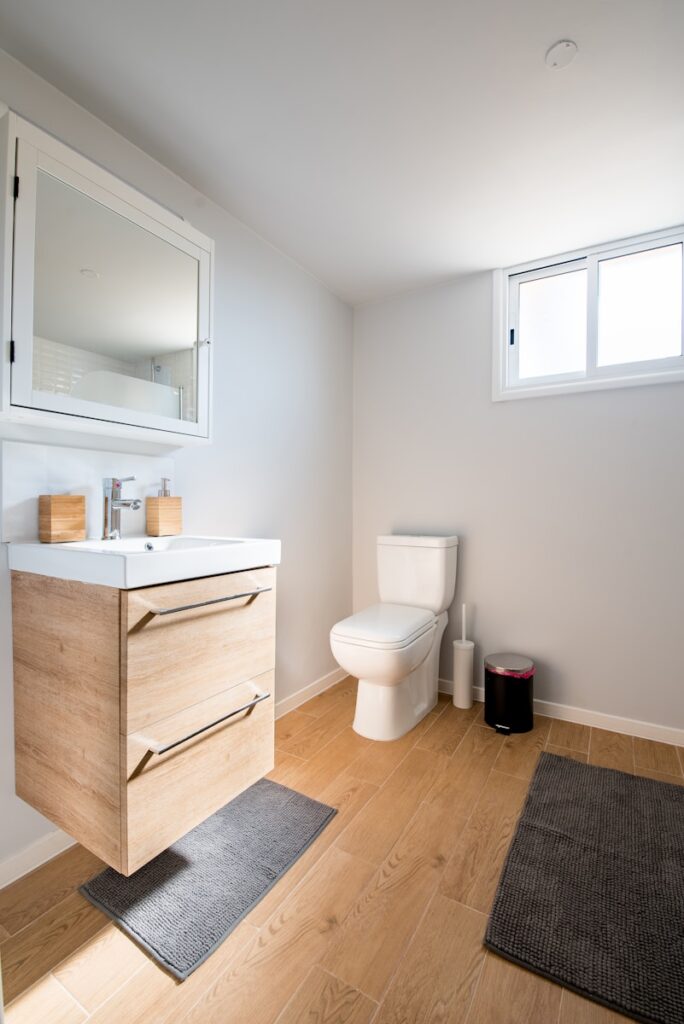
When asking to use the bathroom, the decision to use formal or informal language depends on your relationship with the person you’re asking. Let’s break it down.
When to Use Formal Language
Use formal language in professional settings or when speaking with strangers. Formal structure shows respect and is appropriate in more serious environments.
Examples:
When Informal Language Is Acceptable
Informal language is best suited for casual settings among friends or family. It creates a relaxed atmosphere and fits well with people you’re familiar with.
Examples:
Being polite in another language not only helps you get what you need, but it also creates more meaningful interactions. Whether you’re using “por favor”, saying “gracias”, or exploring between formal and informal language, the goal is to communicate respect and friendliness.
Asking to Use the Bathroom in Different Situations
Ever found yourself grasping for the right words to ask where the bathroom is while in a Spanish-speaking country? Mastering these phrases not only helps in urgent moments but also adds a sprinkle of charm to your interaction. Let’s jump into specific scenarios where you might need to ask to use the bathroom.
In a Restaurant: “¿Dónde están los servicios?”
Imagine yourself enjoying a delicious meal at a bustling Madrid restaurant. You feel the urge to find a restroom. Politely catching the waiter’s attention, you ask, “¿Dónde están los servicios?” This phrase translates to “Where are the restrooms?” It’s polite, straightforward, and perfect for restaurant settings. If you’re looking for more familiarity, another option is “¿Dónde está el baño?” which means “Where is the bathroom?”
At Someone’s Home: “¿Puedo pasar al baño?”
You’re at a friend’s housewarming party, soaking up the lively atmosphere. Suddenly, you need to use the bathroom. Turning to your host, you can say, “¿Puedo pasar al baño?” meaning “Can I use the bathroom?” This phrase shows respect for the host’s space. Alternatively, “¿Puedo ir al baño?” translates to “Can I go to the bathroom?” Both phrases are polite and convey your request clearly.
In a Public Place: “¿Hay un baño público cerca?”
Picture yourself exploring a vibrant Mexican market. The calles are bustling, and you need to find a restroom. Approaching a vendor, you might ask, “¿Hay un baño público cerca?” which means “Is there a public restroom nearby?” In larger, busy areas, you could opt for “¿Dónde está el servicio?” meaning “Where is the restroom?” These questions are practical in crowded, public environments.
Emergency Situations: “¡Necesito un baño urgentemente!”
Emergencies happen. Maybe you’re on a long bus ride through the Chilean countryside, and it suddenly becomes urgent. You might shout, “¡Necesito un baño urgentemente!” which means “I need a bathroom urgently!” In absolute emergencies, “¡Necesito ir al baño ahora mismo!” meaning “I need to go to the bathroom right now!” can effectively communicate urgency. These phrases underscore the critical nature, ensuring people understand the immediacy.
These phrases will ease your way through different scenarios, helping you feel more at home while exploring Spanish-speaking environments. Finally, remember to sprinkle some magic words like “por favor” (please) and “gracias” (thank you) to keep your interactions warm and respectful.
Cultural Considerations When Asking for the Bathroom
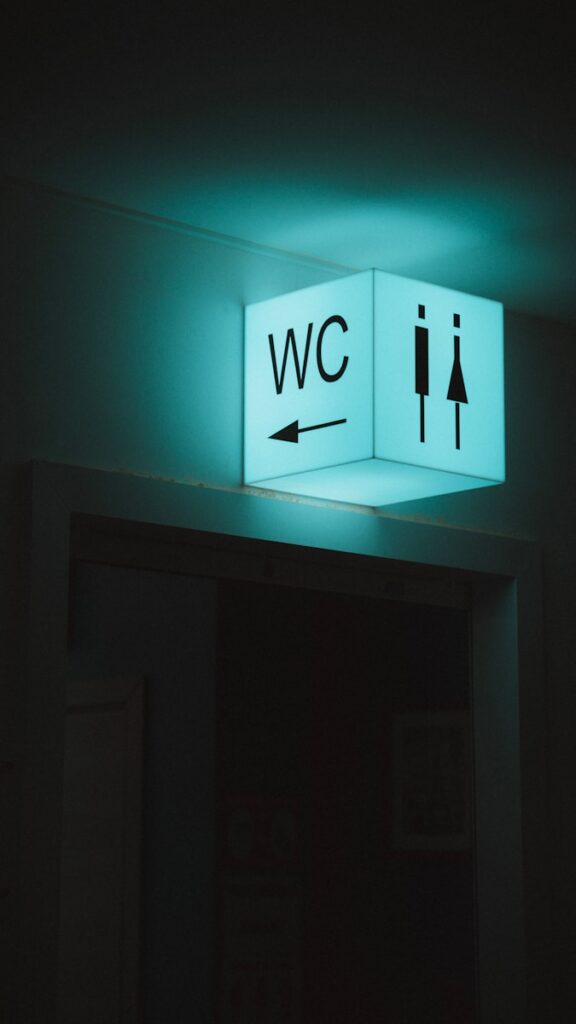
When exploring Spanish-speaking regions, understanding cultural nuances can make a significant difference. Let’s investigate into important considerations to keep your interactions smooth and respectful.
Level of Formality in Different Spanish-speaking Countries
Talking to someone in Spain might be very different from speaking with someone in Mexico or Argentina. While in Spain, even strangers can be quite informal. In Mexico, people tend to appreciate a more formal approach, especially when they don’t know you well. Using phrases like “¿Podría decirme dónde está el baño, por favor?” can show politeness and respect.
Consider asking yourself, “Am I in a formal setting or a casual one?” Adapting your language based on the setting can help you blend in and show respect for local customs.
Gender-specific Bathroom Signs
Understanding bathroom signs is crucial, especially to avoid awkward situations. While many signs are universal, some regional terms might catch you off guard.
“Caballeros” (Gentlemen)
In many Spanish-speaking countries, you’ll find the term “Caballeros” on men’s bathroom signs. This term is common in places like Spain, Mexico, and Peru. If you’re unsure, look for other familiar icons indicating a men’s restroom.
“Damas” or “Señoras” (Ladies)
For ladies’ restrooms, you’ll typically see “Damas” or “Señoras”. Both terms are widely recognized but knowing them can save you stress in unfamiliar places. Remember, it’s always better to ask politely if you’re confused.
Tipping Etiquette for Public Restrooms
In some Spanish-speaking countries, tipping is customary when using public restrooms. In places like Mexico and Spain, attendants might expect a small tip, often ranging from 0.50 to 1 Euro or its equivalent.
Country | Tipping Custom | Typical Amount |
|---|---|---|
Spain | Common in cities | €0.50-€1 |
Mexico | Common in tourist areas | $5-10 MXN |
Argentina | Less common | Optional |
Always carry small change when traveling. Ask yourself, “Do I see an attendant?” If yes, it’s courteous to leave a small tip to acknowledge their services.
Understanding these cultural considerations can transform a mundane request into a respectful interaction. Now, you’re equipped to navigate bathrooms in Spanish-speaking regions with confidence and courtesy.
Common Mistakes to Avoid When Asking for the Bathroom in Spanish
Exploring bathroom requests in Spanish can feel daunting. But don’t worry, we’ve got you covered! Let’s jump into some common mistakes and how to avoid them.
False Cognates and Misinterpretations
“Embarazada” (pregnant) vs. “Avergonzada” (embarrassed)
These two words may look similar but mean entirely different things. Imagine asking for the bathroom and accidentally saying you’re pregnant! It’s crucial to remember “embarazada” means pregnant, not embarrassed. To express embarrassment, use “avergonzada” instead.
“Excusado” (toilet) vs. “Excused” (excusado)
Another common mix-up involves “excusado” and “excused.” “Excusado” refers to the toilet, not being excused from something. Using the wrong term can confuse your listener and possibly create an awkward moment.
Spanish Term | English Meaning |
|---|---|
Embarazada | Pregnant |
Avergonzada | Embarrassed |
Excusado | Toilet |
Excused | Excused from an obligation |
Overly Direct or Crude Expressions
Direct translations can sometimes come off as impolite. Instead of saying “I need to go to the bathroom”, opt for “¿Puedo ir al baño?” (Can I go to the bathroom?) or “Necesito ir al servicio” (I need to go to the restroom). These phrases sound more polite and respectful.
Using the Wrong Level of Formality
Spanish has different levels of formality, and it’s essential to adapt accordingly. Using “¿Puedo ir al baño?” in a formal setting, like speaking to someone older or in authority, shows respect. When with friends or family, the same phrase works but can be relaxed a bit depending on your relationship.
Confusing Similar-Sounding Words
“Baño” (bathroom) vs. “Año” (year)
“Baño” and “año” may trip you up due to their similarity. Saying “año” instead of “baño” changes your sentence from “Can I go to the bathroom?” to “Can I go to the year?”—quite a drastic shift!
“Servicio” (restroom) vs. “Cerveza” (beer)
Don’t mix up “servicio” and “cerveza.” Asking for the restroom using “cerveza” will not help you find a bathroom but may result in someone offering you a beer. Fun but not what you’re looking for!
Similar Words | Meaning | Common Mistakes |
|---|---|---|
Baño | Bathroom | Año (Year) |
Servicio | Restroom | Cerveza (Beer) |
Useful Vocabulary for Bathroom-Related Situations
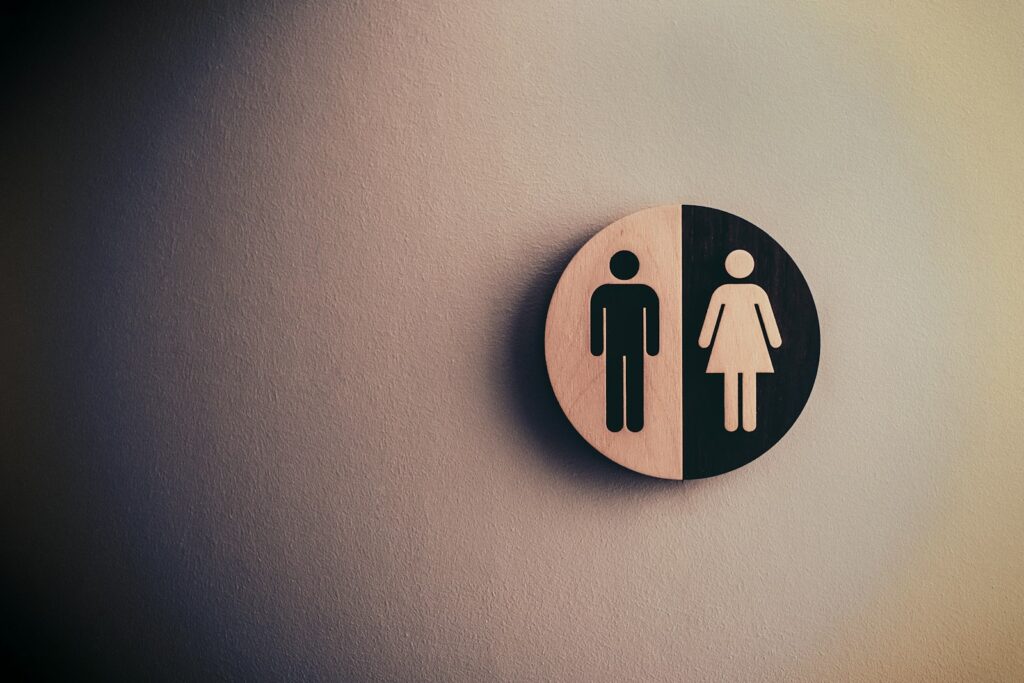
Exploring a bathroom request in Spanish-speaking countries involves more than just knowing how to ask. You’ll need some basic vocabulary to handle different scenarios. Here’s some essential lingo to make your experience smoother.
Toilet Paper: “Papel higiénico“
Ever found yourself in need of toilet paper during a very inconvenient time? Knowing how to ask for it is crucial. The term for toilet paper in Spanish is “papel higiénico”. Imagine you’re at a local café and realize there’s no toilet paper. You could approach an employee and say, “¿Tienen papel higiénico?” (Do you have toilet paper?). Mastering this can save you from an awkward situation and ensure you’re always prepared.
Sink: “Lavabo“
When traveling, you might find yourself needing to freshen up. In Spain, asking for the sink is easy with the word “lavabo”. For instance, say you’re at a bustling market and you accidentally spill some delicious churro chocolate on your hands. You can quickly find a vendor and ask, “¿Dónde está el lavabo?” (Where is the sink?). This small term can help you stay clean and comfortable.
Flush: “Tirar de la cadena“
Flushing mechanisms aren’t universal, and you might need to ask for assistance. The phrase “tirar de la cadena” means to flush. Picture yourself in a restroom where the flushing mechanism is different from what you’re used to, and you see no obvious lever or button. You can ask someone, “¿Cómo tiro de la cadena?” (How do I flush?). Knowing this can help you handle any bathroom fixtures you encounter.
Out of Order: “Fuera de servicio“
Nothing’s worse than running to a bathroom only to find it’s out of order. The phrase for this is “fuera de servicio”. If you’re at the airport rushing to the restroom and see a sign, this phrase will inform you that it’s temporarily unavailable. Knowing this can save you time and save you from an urgent search for another bathroom. Always check for signs saying “Baño fuera de servicio” (Bathroom out of order).
English Term | Spanish Translation |
|---|---|
Toilet Paper | Papel higiénico |
Sink | Lavabo |
Flush | Tirar de la cadena |
Out of Order | Fuera de servicio |
These vocabulary words are small yet mighty tools you can use in countless situations. Beyond being polite, they enable smooth and stress-free interactions. So keep these terms handy and navigate your travels with confidence.
Practice Dialogues: Asking to Use the Bathroom in Spanish
Let’s explore how to ask to use the bathroom in different Spanish-speaking scenarios. Imagine yourself in each situation; these dialogues make it easy to handle such moments confidently. Below are some common situations and phrases to help you ask where the bathroom is, gracefully and without hesitation.
At a Restaurant
Finding the restroom in a restaurant can sometimes be tricky, especially if you’re unsure of the layout. Here’s how you can smoothly navigate this:
You: ¿Dónde está el baño? (Where is the bathroom?)
Waiter: Claro, está al final del pasillo. (Of course, it’s at the end of the hallway.)
In a restaurant setting, you may use other variations like ¿Puedo usar el baño? (Can I use the bathroom?). If the restaurant is busy, you might get a quick reply like Está por allí. (It’s over there.) Understanding these short responses can help you find your way efficiently.
In a Friend’s Home
When visiting a friend’s home, you’ll want to be polite while asking to use the bathroom. Here’s a simple, respectful way to ask:
You: ¿Puedo ir al baño? (Can I go to the bathroom?)
Friend: Sí, por supuesto. Está al lado de la cocina. (Yes, of course. It’s next to the kitchen.)
Using Puedo shows politeness, making your request sound respectful. It’s similar to saying, “May I” in English. This small touch makes a big difference in how your friend perceives your manners.
At a Public Place
Public places, like parks or shopping malls, often require a bit more formality. This is the perfect phrase to use:
You: Disculpe, ¿podría usar el baño? (Excuse me, could I use the bathroom?)
Stranger: Por supuesto, sube las escaleras y a la derecha. (Of course, go up the stairs and to the right.)
Disculpe is a great way to start, as it’s a polite attention-getter. This phrase is especially useful in public spaces where you need to quickly ascertain the location of the nearest bathroom.
In an Emergency Situation
Emergencies don’t always provide time for elaborate politeness. Here’s what to say when urgency is paramount:
You: Necesito ir al baño urgentemente. (I need to go to the bathroom urgently.)
Other Person: ¡Vamos, rápido Está allí. (Let’s go, quickly It’s over there.)
Using necesito conveys the urgency without being impolite. This phrase cuts straight to the point, helping you communicate your immediate need effectively.
By familiarizing yourself with these dialogues, you’ll feel more at ease asking for the bathroom in various Spanish-speaking environments. Practice these phrases out loud, and soon enough, they’ll come to you naturally when you need them.
Conclusion: Mastering Bathroom Requests in Spanish
Whether you’re traveling or just practicing your Spanish skills, knowing how to ask to use the bathroom is essential. With the key phrases and vocabulary we’ve covered, you’ll feel more confident in any Spanish-speaking setting. Remember to pay attention to regional differences and cultural nuances to make your requests smoothly.
Practicing these dialogues will help you handle various situations, from casual outings to emergencies. So next time you need to find a bathroom in a Spanish-speaking country, you’ll be prepared and polite. Happy travels and good luck with your Spanish journey!
Frequently Asked Questions
What are some key Spanish phrases for asking about the bathroom?
To ask about the bathroom in Spanish, you can use phrases like “¿Dónde está el baño?” (Where is the bathroom?) and “¿Puedo ir al baño?” (Can I go to the bathroom?).
Are there regional variations in asking for the bathroom in Spanish-speaking countries?
Yes, different regions might use different terms. For example, in Spain, “servicio” or “aseo” might be used, while in Latin America, “baño” is most common.
What should I consider culturally when asking for the bathroom in a Spanish-speaking country?
Be aware of the formality level required in the situation. Use polite forms like “Por favor” and “¿Puedo?” in more formal contexts.
How do you distinguish between gender-specific bathroom signs in Spanish?
Look for “Señoras” or “Mujeres” for women and “Caballeros” or “Hombres” for men on bathroom signs.
Key terms include “papel higiénico” (toilet paper), “lavabo” (sink), “tirar de la cadena” (flush), and “fuera de servicio” (out of order).
Can you provide an example of a practice dialogue for asking to use the bathroom in a restaurant?
Certainly! You might say, “Disculpe, ¿puedo usar el baño?” (Excuse me, can I use the bathroom?), and the response could be, “Sí, está al fondo a la derecha.” (Yes, it’s at the back on the right).
How do you ask for the location of the bathroom in an emergency situation in Spanish?
In an emergency, you can say, “¡Necesito encontrar el baño urgentemente!” (I urgently need to find the bathroom!).
How is “toilet paper” translated in Mexico?
In Mexico, “toilet paper” is translated as “papel higiénico.”
Why do some bathrooms in Mexico use the term “WC”?
The term “WC” stands for “water closet” and is commonly used on toilet signs in Mexico, even though the derivation is not widely known locally.
How do you ask politely to use the bathroom at a friend’s home in Spanish?
You can say, “¿Me prestarías el baño, por favor?” (Could I use the bathroom, please?). This is a polite way to make your request.
